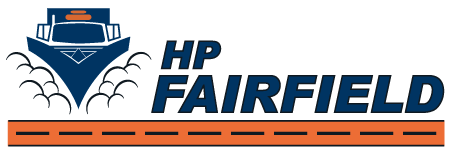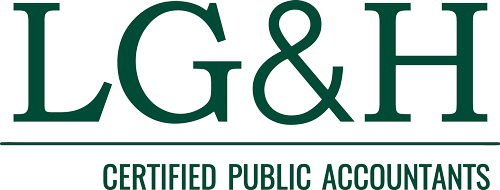15 Best SEO Practices For Structuring URLs

The structure of domain names, as well as URLs, can be considered one of the cornerstones of SEO best practices. This won’t apply to necessarily every page that you make on your website. However, it has an overall effect that you should definitely focus on.
For example, it’s not true that Google won’t rank your site well if you don’t follow every last point on this list. These serve as a good starting point for taking advantage of some of the best practices in structuring URLs for SEO.
Let’s Get Started!
Take a look at some of these practices so that you can take advantage of all that SEO offers.
1. If possible, use a single domain & subdomain.
There’s plenty of evidence of people moving over their content from a subdomain to a subfolder. Then, they see better results when it comes to their traffic. Whatever system the search engines use to figure out whether that content gains the ranking ability of the original parent domain has some trouble passing on to subdomains.
Keep in mind of course that this doesn’t mean that you can’t make it work. Only that your blog and overall site are much more likely to perform well if everything is together on one subdomain, one root domain. This is something that you can see with companies like Links Web Design.
2. The more readable the whole thing is, the better.
It’s pretty natural to assume that the more a URL is readable overall, the better it shows up in search engines. If you assumed this, you’d be correct. Accessibility has always been a big factor in SEO.
It’s especially crucial now that engines can actually leverage their usage data. Advanced user signals to figure out what people engage with versus what they aren’t. Your URL doesn’t have to be absolutely perfect for this to help you out. It’s at least a point to consider when building your webpage.
3. Keywords in URLs are helpful.
Using keywords that you target for rankings within your URLs is definitely a good idea. Really, there are a few reasons for this. One reason is that keywords in the URL help people to know what they click on before they click on it. For example, if they hover their mouse over the link before clicking it. Another reason is that it’s pretty common for URLs to copy over to pages.
When there’s no anchor text to use, the URLs themselves serve as that anchor. As you can imagine, if you have a URL with good keywords in it, this increases overall traffic. The last reason for this is one that you might have already figured by now. URLs show up in search results. Appealing keywords is definitely the way to go here.
4. If you have multiple URLs serving the same content, canonicalize them.
If you have two separate URLs that essentially serve the same content, canonicalize them. Use either a 301 redirect, assuming there isn’t a reason to keep the duplicate. Use a “rel=canonical” to keep versions a bit different for some visitors. Like if you wanted a printer-friendly version of your page, for example.
Duplicate content doesn’t really penalize you when you copy your own content when it comes to search engines. It can definitely split your ranking signals. Eventually, it can harm your potential for greater search traffic.
Basically, if you have an initial page with the potential for ranking ability and a second page with an overall similar quantity of ranking potential, you can canonicalize them. Then, give your first page a better chance to rank high in search results and earn more visits overall.
5. Get rid of dynamic parameters whenever you can.
Put simply, if you can avoid URL parameters, you should definitely do so. If you had a URL that ended with something like “teaser&id=44,” you definitely want to clean that up. It isn’t the most aesthetically pleasing of tags to use in your URL.
Instead, you should rewrite these parameters as more static and readable text. There are many CMS platforms you can use to take advantage of this fact. Things like ISAPI rewrite, MS’ URL Rewrite Module, and mod_rewrite.
Note that there are some dynamic parameters that are used for tracking overall clicks on a page. While these don’t cause a big problem, they do lead to awkward, unappealing URLs. Only you can decide whether the benefits of using tracking parameters outweigh the negatives for you.
6. Shorter URLs are better than longer ones.
In general, shorter URLs are preferred to longer ones. Now again, you don’t need to worry too much about this one. If your URL is between 50-60 characters, you’re generally fine overall. On the other hand, if your URL is greater than 100 characters, you can probably stand to rewrite this to gain more value.
Now, this doesn’t tend to be a problem with the bigger search engines out there, like Google or Bing. These engines can process some of the longer URLs without much in the way of trouble. The real issue is when it comes to user experience and overall usability. When you think about it, shorter URLs are easier to parse out, copy, paste, share over social media, and embed.
While this might only be a small improvement in either sharing or amplifying your content, every little bit definitely helps in the long run. If you pair this strategy with some that we spoke about earlier or others that we’ve yet to talk about, it’ll be far more likely for you to gain a steady readership. You may even attract people who might not otherwise click on your links.
7. Match your URLs to titles whenever it makes sense.
Again, you don’t have to do this in every single case. Matching your URL to the title gives your readership a pretty good idea of what they can expect by clicking on the link. This will be reinforced by reading the title once they do click on it.
Then, they see that they were correct. On this note, you should also keep the page title and the visible headline that’s on the page as a pretty close match. The title creates an expectation in the minds of your readers that the headline then delivers on.
8. Including stop words isn’t completely necessary.
If your title has stop words, otherwise known as the, but, of, and, and others, it isn’t absolutely crucial that you put them in the actual URLs. You don’t have to totally leave them out either. This can help to make a URL shorter.
Thus, it is more readable in the long run. Again, only you can decide what’s best for your page when it comes to including stop words or not in your URLs. It can’t hurt to at least look at some of these instances in your URLs to get an idea of what tends to work the best for you and what doesn’t.
9. Try to get a hold of any unwieldy punctuation characters you might have.
You want to make your URL as readable as possible. One of the ways you’re going to do this is by limiting punctuation characters that don’t show up well in URLs. Believe it or not, not only can some of these characters lead to poor readability overall.
They can also potentially break some browsers in the process. This can turn your readers off from the material you provide for them. If your customers can’t access the material the first go around with one browser, it’s highly unlikely that they’ll bother opening up this site in another browser afterward.
10. You want to limit your redirection hops to two or fewer.
It’s good if your first page redirects to a second page. Technically, it’s okay if that second page then redirects to a third page. It’s technically better if the first page just redirects to the third page directly. The thing you really need to look out for is if your URL redirect string goes past two hops.
This starts to get you into some trouble. In general, search engines follow that longer sort of redirect jump. They do tend to recommend against the practice on the whole. Along with this, for URLs considered less important, they might not completely count these ranking signals.
The bigger problem really, though, is users and browsers, both of which are slowed down by some of the longer redirect strings that there are. As a result, you want to keep your redirects to a minimum to avoid any potential problems.
11. The fewer folders you use the better.
When it comes to URLs, folders generally appear as slashes. It’s best if you have fewer of these slashes and folders. These can lead to performance issues for people visiting your site.
Use your best judgment on this one, as in all the rest of the points we made so far. If you need to break your page into more folders, that’s technically okay. Keep in mind that it can have some negative repercussions in the long run.
12. Try not to use hashes in your URLs that create unique or separate content.
Hashes have always been a good way to send your visitors to a location on a page. They can also act as tracking parameters as well. However, it’s a bad idea to use your URL hashes for something different like showing unique content different than what you have on the page without the hash, or else a totally separate page.
There are of course exceptions to this. Like the ones that Google enables for developers. These actually aren’t as clean or friendly to visitors from an SEO perspective as URLS rewritten in a static way. Considering that behemoth sites like Twitter and Amazon use this strategy to simplify their URLs, realize that you can do exactly the same thing to better structure your URL.
13. Keep an eye on case sensitivity when structuring your URLs.
If you use either IIS or Microsoft servers, you’re generally okay when it comes to case sensitivity in your URLs. The only thing is that UNIX and Linux servers can present different cases. Even URLs with the same letters but with slight differences in case sensitivity can lead to totally different sites. It would obviously be ideal if URLs with the wrong case were automatically redirected to the right one.
Unfortunately, this isn’t always the case. To that end, there are actually entire rewrite protocols in place that help you with this exact problem. Try taking advantage of one of these resources. See if it doesn’t help you to work out what you can do to maximize readership as well as engagement in whatever it is that you’re trying to promote.
14. Hyphens & underscores are best for separating words.
Now, in the past, things like underscores caused significant problems when it came to structuring URLs. This is much different now. Underscores are actually treated in a similar way to hyphens. If you want to avoid using either hyphens or underscores, you could use spaces to break up the text in your URLs.
Keep in mind that this appears as “%20” instead of as the space you wanted. It can definitely impact the overall readability of your site’s URL. There isn’t one way of doing things that works perfectly for everyone. You need to use your best judgment to decide what works in your particular case.
15. Using repetition & keyword stuffing in your URLs doesn’t have much of a point.
It actually makes your site seem like spam. When a potential reader checks out your URL, as they tend to do before clicking on it, they probably will be put off if the same words or phrases repeat. People are all too accustomed to seeing such repetition in spam posts and the like. This will definitely not be putting your best foot forward when garnering increased readership.
Instead, try to diversify with what you put into your URL. Perhaps even use sentences or phrases as we talked about in the past. While it might not necessarily be the thing that drives a person over the edge to click on your link, it definitely can’t hurt in that regard.
While this list is by no means exhaustive, it definitely gives you a good start towards figuring out just what you need to do to drive in some of the readership out there. SEO practices constantly change. You also need to be adaptable.
React to situations as they arise.
As we repeated throughout the various points used in this article, your individual circumstances ultimately determine what you choose to do. There isn’t one right decision for you to make. Whether considering your case sensitivity, limiting the number of folders that you use, or even cutting your redirect hops down to a minimum.
There are plenty of ways that you can get your URLs into top shape and working for you. As opposed to putting potential readers off from what you’re trying to put out into the world. Take a look into implementing some of these points. Even considering some other ones that might be better for you to explore get you closer to the right decision for you and surmounting that barrier of readership.
Links Web Design is a Website Design Company in Bangor, Maine.









